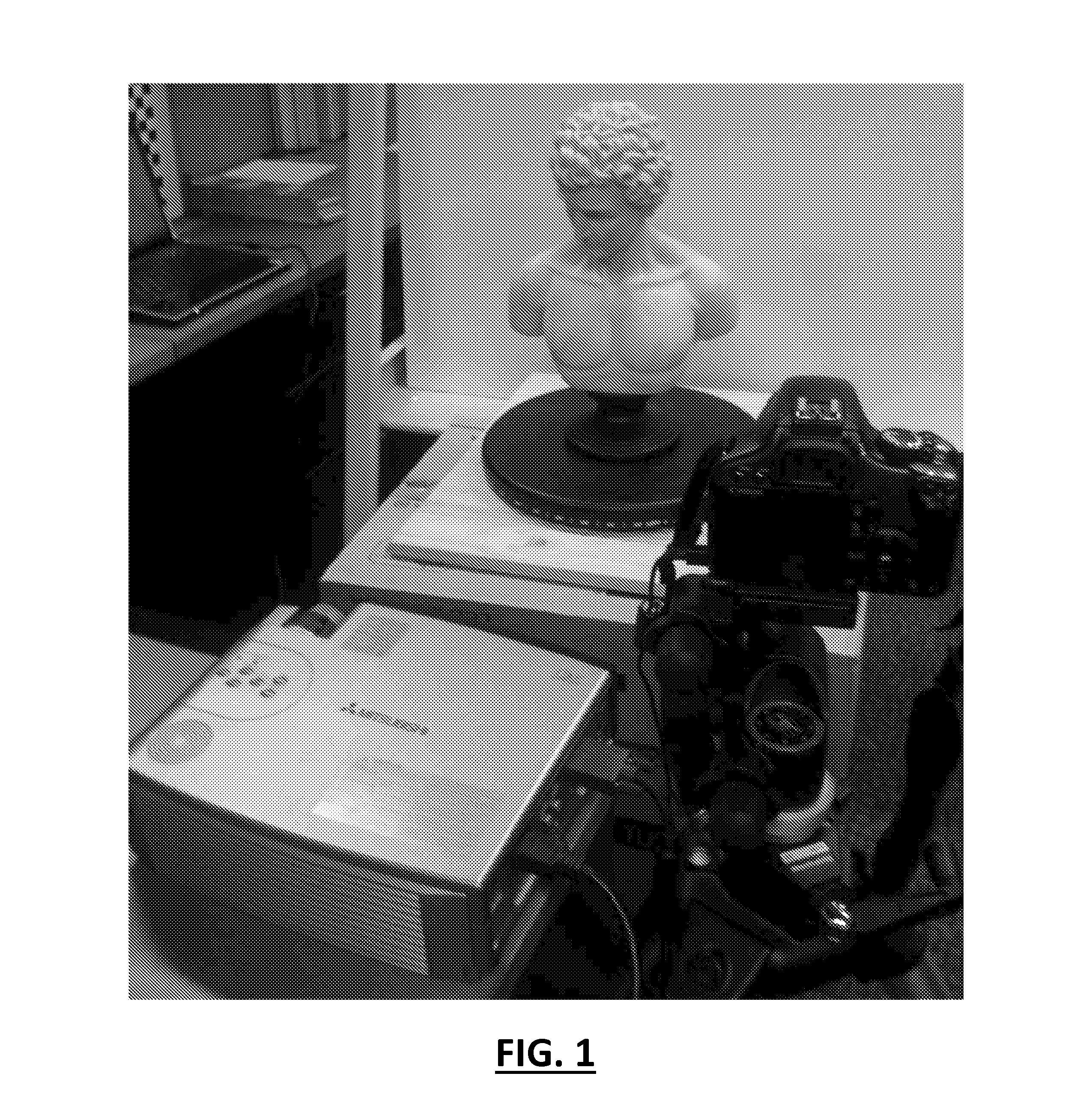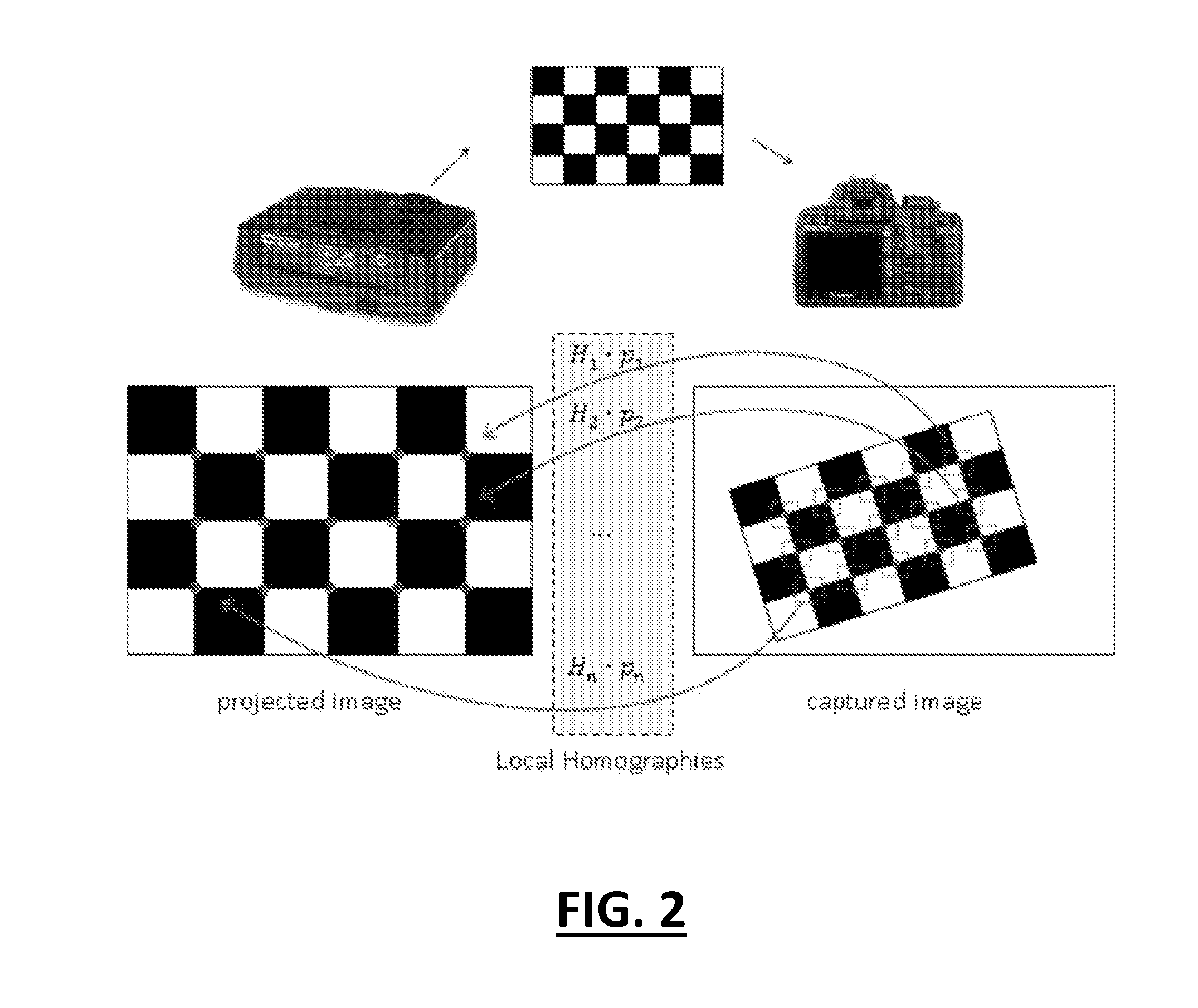Method for generating an array of 3-d points
a technology of point array and array, applied in the field of generating an array of 3d points, can solve the problems of difficult to near impossible to generate a surface from such a point set, prohibitively expensive laser scanner systems, and substantial time required to process three-dimensional objects, and achieve the effect of inexpensively and reliably gen
- Summary
- Abstract
- Description
- Claims
- Application Information
AI Technical Summary
Benefits of technology
Problems solved by technology
Method used
Image
Examples
Embodiment Construction
[0025]The present invention provides generally for a method that estimates the coordinates of the calibration points in the projector image plane using local homographies obtained from the imaging camera. First, a dense set of correspondences between projector and camera pixels is found by projecting onto the calibration object an identical pattern sequence as the one later projected when scanning the target, reusing most of the software components written for the scanning application. Second, the set of correspondences is used to compute a group of local homographies that allow projection back of any of the points in the calibration object onto the projector image plane with sub-pixel precision. In the end, the data projector is then calibrated as a normal camera.
[0026]Principally the present method focuses on finding correspondences between the projector pixels and real 3D world points. Once those correspondences are known, any calibration technique available for passive stereo ca...
PUM
 Login to View More
Login to View More Abstract
Description
Claims
Application Information
 Login to View More
Login to View More - R&D
- Intellectual Property
- Life Sciences
- Materials
- Tech Scout
- Unparalleled Data Quality
- Higher Quality Content
- 60% Fewer Hallucinations
Browse by: Latest US Patents, China's latest patents, Technical Efficacy Thesaurus, Application Domain, Technology Topic, Popular Technical Reports.
© 2025 PatSnap. All rights reserved.Legal|Privacy policy|Modern Slavery Act Transparency Statement|Sitemap|About US| Contact US: help@patsnap.com



